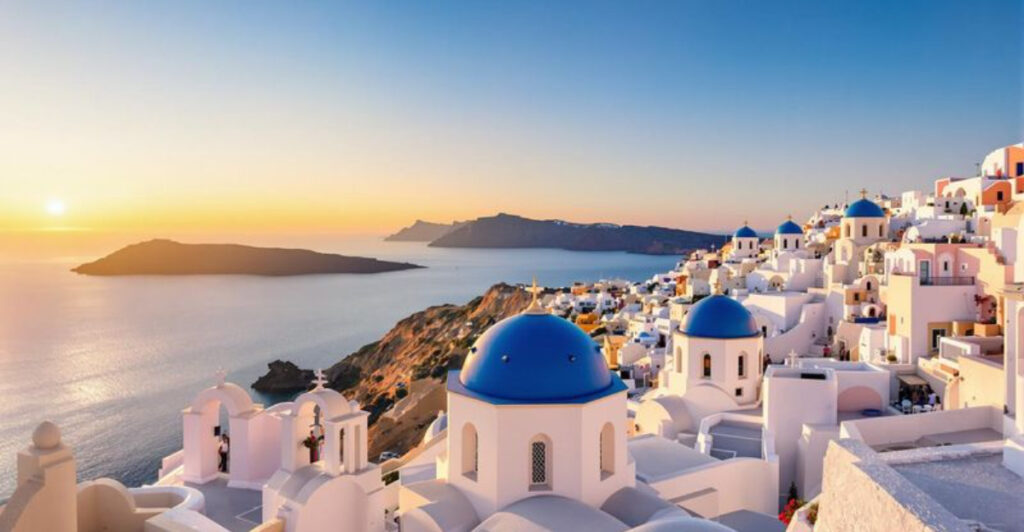Greece’s islands are like scattered jewels across the blue Aegean and Ionian seas. Each island has its own special magic – from white-washed villages clinging to cliffs to hidden beaches with crystal waters. Whether you’re looking for ancient history, stunning sunsets, or peaceful hideaways, these Greek islands offer unforgettable experiences that have charmed travelers for centuries.
1. Mykonos: Glamorous Paradise of Windmills and Nightlife
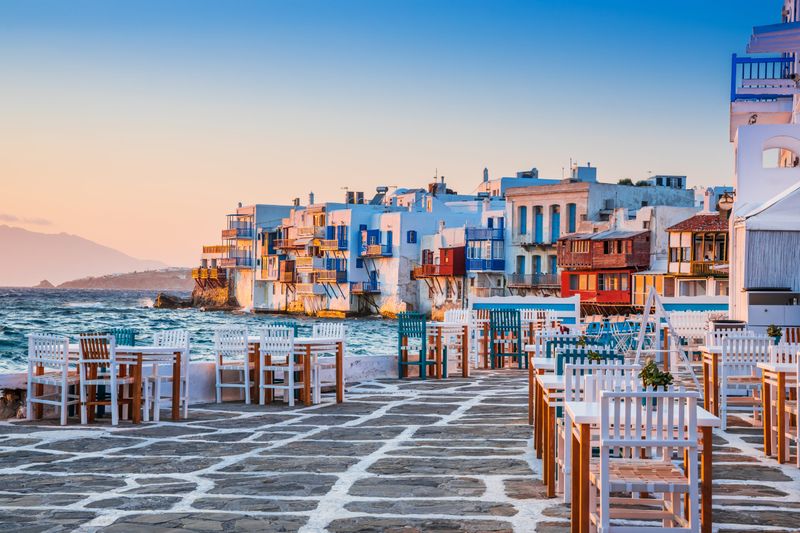
Little Venice’s waterfront cafés sit where waves gently splash against colorful balconies, creating Mykonos’ most romantic setting. The island’s iconic windmills stand sentinel above Chora, remnants of 16th-century innovation that have become symbols of Cycladic beauty.
By day, golden beaches like Paradise and Super Paradise pulse with energy as international DJs transform shorelines into open-air dance floors. Yet hidden corners of tranquility exist – the sleepy village of Ano Mera with its monastery offers a glimpse into traditional island life.
Mykonos masterfully balances glamour with authenticity. Designer boutiques line labyrinthine streets where fishing boats still bring daily catches to waterfront tavernas, serving the same recipes that have satisfied islanders for generations.
2. Crete: Ancient Wonders Meet Mediterranean Majesty
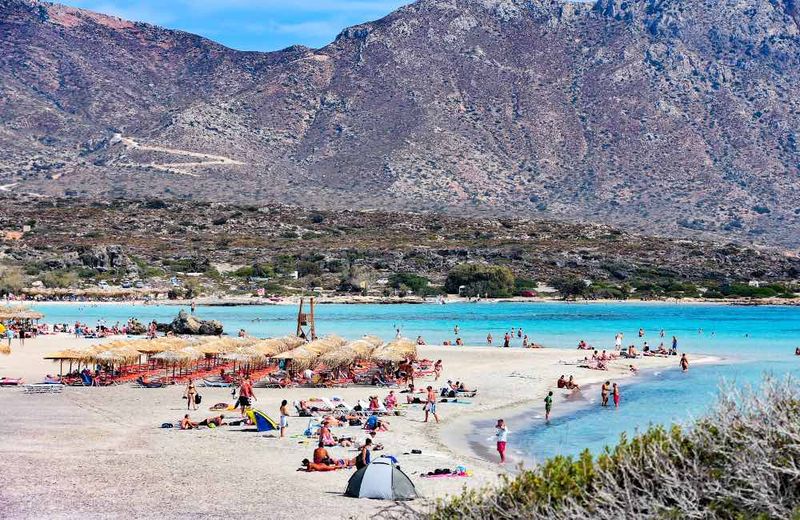
Mythological birthplace of Zeus, Crete unfolds as Greece’s largest island playground where ancient Minoan palaces whisper tales of Europe’s earliest civilization. The Palace of Knossos, with its reconstructed frescoes and legendary labyrinth connections, transports visitors back 4,000 years to the height of Minoan power.
Diverse landscapes captivate at every turn – from the pink-sand beaches of Elafonisi to the rugged White Mountains where wild goats navigate precarious slopes. The 16km-long Samaria Gorge challenges hikers with Europe’s longest canyon trek, rewarding efforts with breathtaking natural beauty.
Cretan cuisine deserves its reputation as Greece’s most distinctive regional food tradition. Mountain villages serve slow-cooked meats with wild herbs while coastal tavernas prepare the morning’s catch with generous drizzles of local olive oil.
3. Rhodes: Medieval Knights and Turquoise Bays
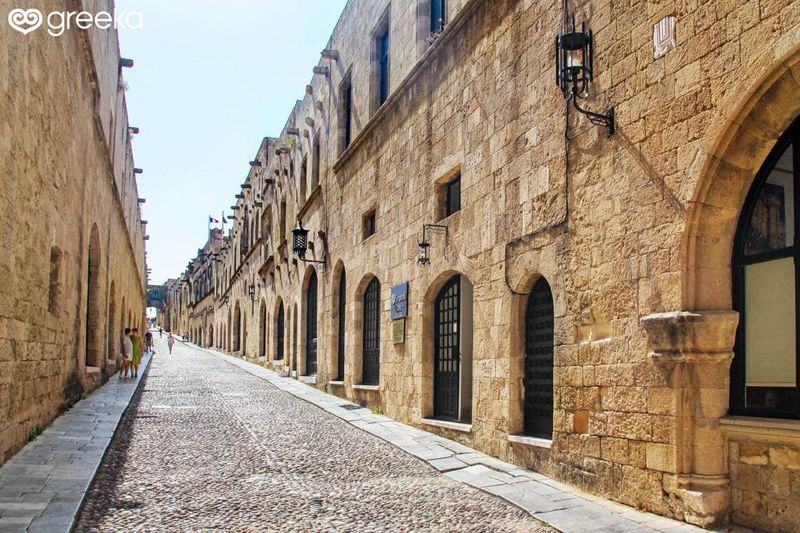
Walking through Rhodes’ Old Town feels like stepping directly into a medieval storybook. Massive stone walls, built by the Knights of St. John in the 14th century, encircle a remarkably preserved citadel where Gothic architecture and Ottoman minarets create a fascinating historical tapestry.
The Street of Knights, lined with inns where crusading knights once gathered by nationality, leads dramatically to the Palace of the Grand Master. Outside the walls, Anthony Quinn Bay sparkles with water so clear it seems almost unreal – named after the actor who fell in love with Rhodes while filming ‘The Guns of Navarone.’
Inland villages like Lindos offer their own magic, where whitewashed houses climb beneath an ancient acropolis perched dramatically above twin harbors. Rhodes balances beach paradise with living history unlike anywhere else in Greece.
4. Corfu: Emerald Isle of Venetian Splendor
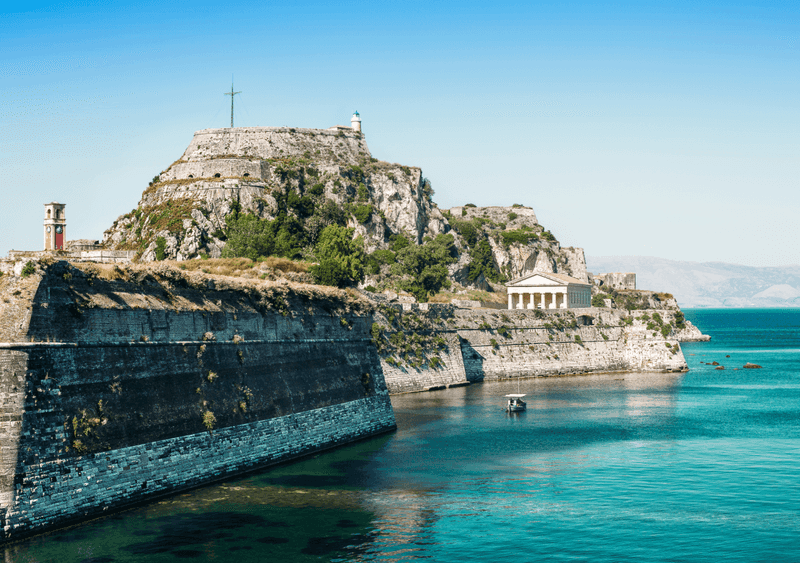
‘Prospero’s Island’ from Shakespeare’s ‘The Tempest’ might well have been inspired by verdant Corfu, where cypress trees and olive groves create a landscape more lush than typical Greek islands. The Venetians ruled here for four centuries, leaving an architectural legacy evident in Corfu Town’s elegant arcaded buildings and fortresses.
British influence followed, gifting the island with cricket grounds and ginger beer traditions that persist alongside Greek customs. Paleokastritsa’s six coves feature water in impossible shades of blue, while the island’s interior reveals mountain villages where time seems to stand still.
The Achilleion Palace, built by Empress Elisabeth of Austria, showcases her obsession with Greek mythology amid spectacular gardens. Unlike the arid Cyclades, Corfu remains green year-round thanks to winter rains that nourish over three million olive trees, many planted during Venetian rule.
5. Santorini: The Postcard-Perfect Volcanic Wonder
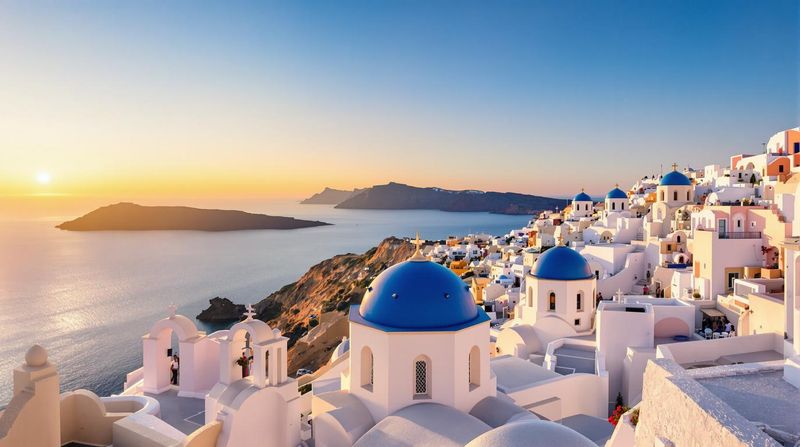
Perched on dramatic cliffs formed by an ancient volcanic eruption, Santorini captivates with its iconic blue-domed churches and whitewashed buildings. The island’s unique black and red sand beaches provide a striking contrast to the azure Aegean waters below.
Sunset in Oia becomes a nightly celebration as golden light bathes the cascading architecture. Beyond the famous caldera views, Santorini offers ancient ruins at Akrotiri, sometimes called the ‘Greek Pompeii,’ preserved for millennia under volcanic ash.
Local wineries produce distinctive varieties from grapes grown in volcanic soil, creating wines with a minerality unique to this island. Whether you’re exploring hidden coves by boat or dining at cliff-edge restaurants, Santorini delivers magic at every turn.
6. Naxos: Marble Mountains and Golden Beaches
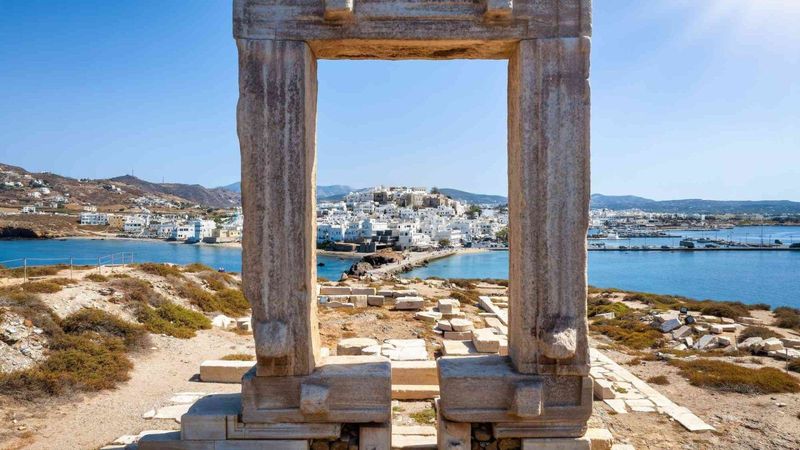
Greeting arrivals to Naxos stands the massive Portara – a 2,500-year-old marble doorway to an unfinished temple of Apollo that frames perfect sunset views. As the largest Cycladic island, Naxos defies expectations with lush valleys where potatoes, olives, and citrus thrive in surprising abundance.
Mountain villages like Apiranthos cling to slopes with marble-paved alleys between stone houses, preserving distinct dialects and traditions. The colossal unfinished kouros statues lie abandoned in ancient quarries, mysterious 10-meter marble giants left by sculptors thousands of years ago.
Families treasure Naxos for its gentle beaches – Agios Prokopios and Plaka stretch for kilometers with shallow, child-friendly waters. Unlike its glamorous neighbors, Naxos maintains agricultural traditions alongside tourism, producing exceptional cheeses like arseniko and sweet kitron liqueur from local citron fruit.
7. Milos: Volcanic Wonderland of Rainbow Shores
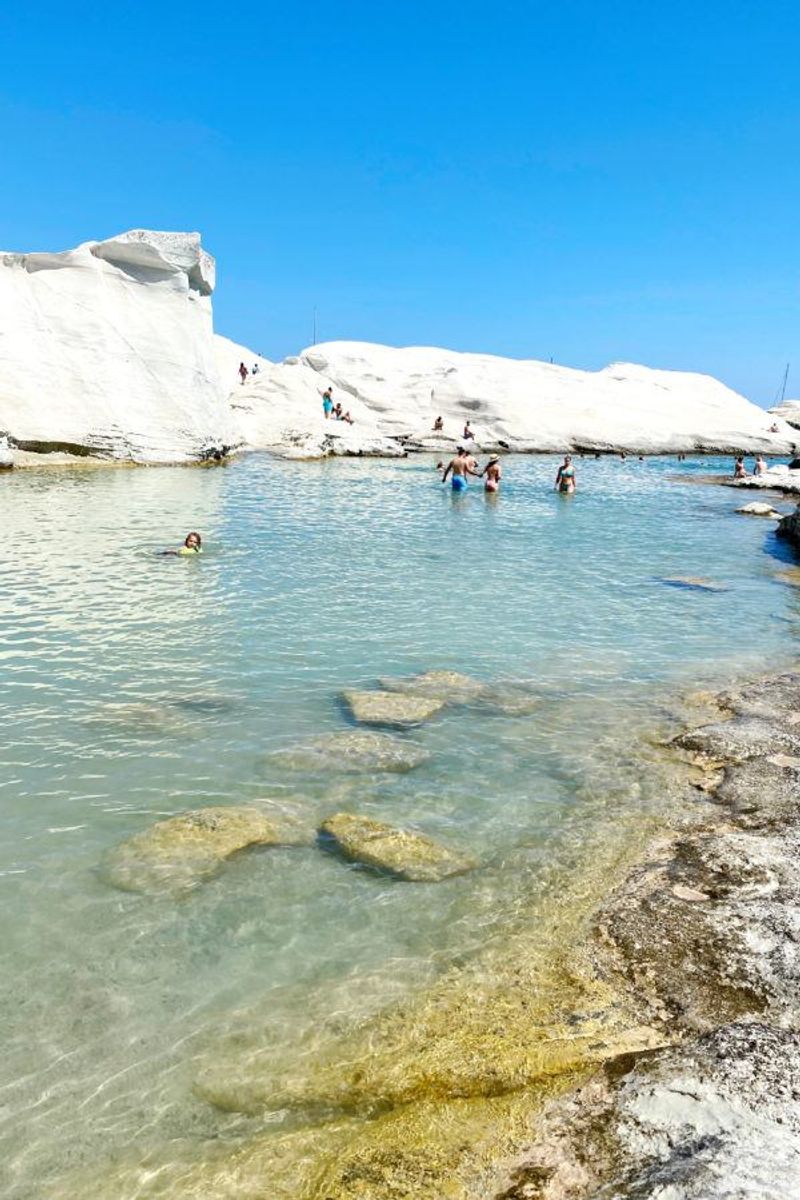
Venus de Milo once called this volcanic wonderland home before the famous armless statue made its way to the Louvre. The island’s extraordinary geology creates beaches unlike anywhere else in Greece – Sarakiniko’s moon-like white volcanic landscape against turquoise waters has become Instagram’s favorite Greek backdrop.
Klima village charms with ‘syrmata’ – colorful boathouses with doors opening directly to the sea, where fishermen once stored vessels on ground floors while families lived above. Over 70 beaches in every color imaginable dot the coastline – from Fyriplaka’s red cliffs to Paleochori’s yellow sulfur-warmed sands.
Ancient catacombs rival Rome’s in historical significance, while the restored Roman theater overlooks the bay where the Venus statue was discovered in 1820. Milos offers geological marvels without Santorini’s crowds, making it the insider’s choice for volcano-shaped beauty.
8. Sifnos: Culinary Haven with Ceramic Soul
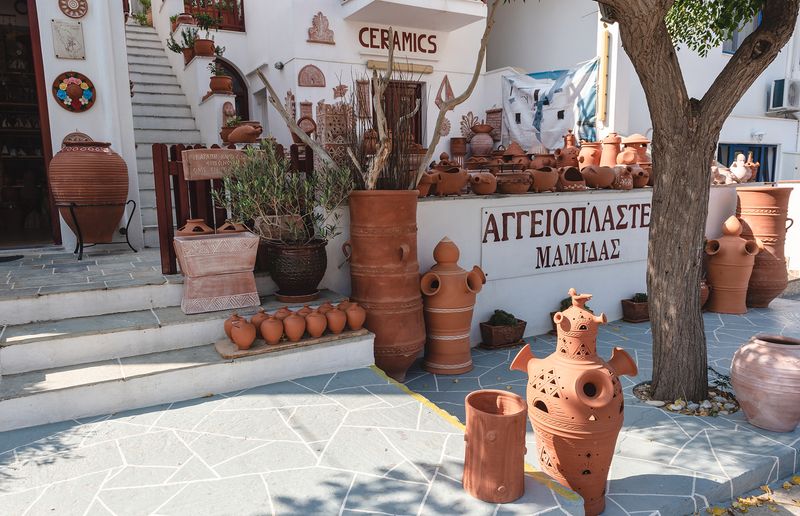
Clay has shaped Sifnos’ destiny for millennia – the island’s pottery tradition created vessels that carried its culinary fame across Greece. Master potter Nikos Tsoukalis still works in Artemonas using techniques unchanged for generations, creating the island’s signature mastelo pots used for slow-cooking lamb with wine and dill.
Apollonia’s whitewashed lanes wind uphill from surprising Art Deco buildings, leading to blue-domed churches that punctuate the skyline. The island’s gastronomy reaches its pinnacle during Easter celebrations when communal ovens bake chickpea stews overnight in traditional clay pots.
Kastro village dramatically occupies a cliff-top archaeological site where ancient walls incorporate fragments of temples. Hiking trails connect settlements via Byzantine stone paths past dovecotes and abandoned monasteries. Sifnos masterfully balances culinary excellence with architectural beauty, making it the thinking traveler’s Greek island.
9. Folegandros: Cliff-Top Serenity Beyond the Crowds
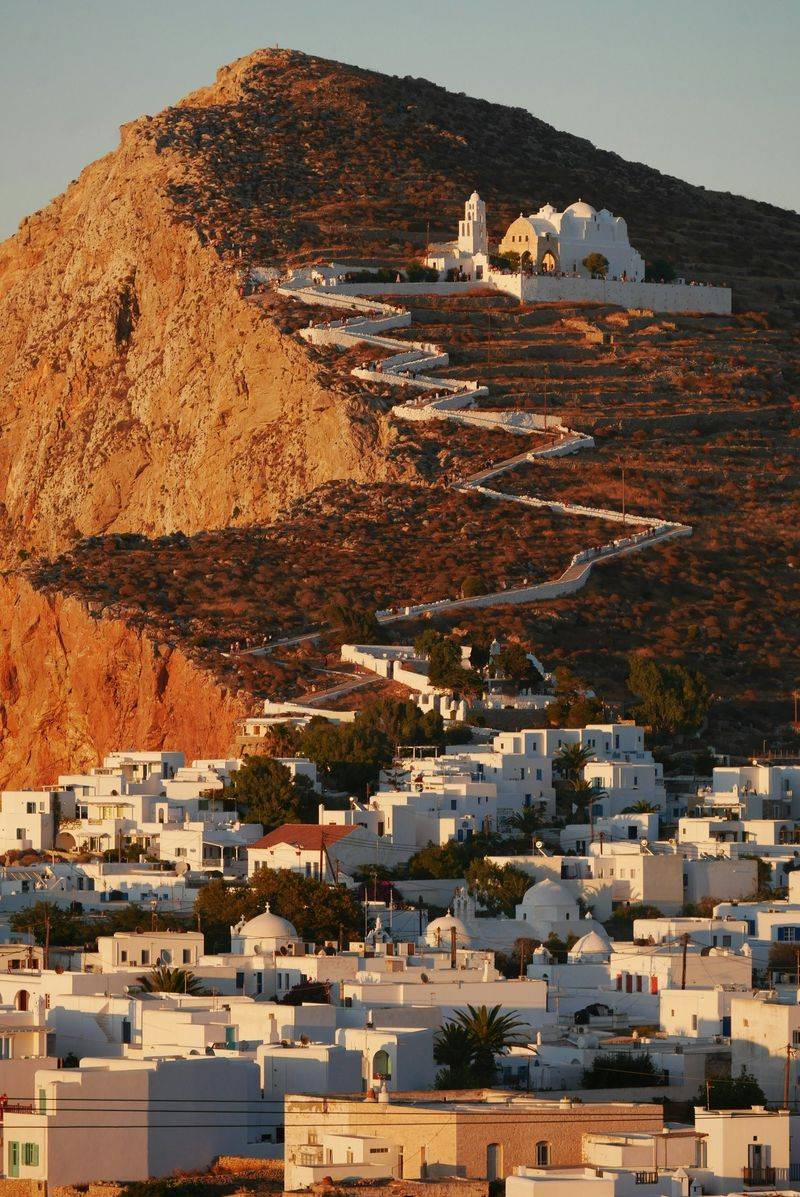
Perched dramatically atop a 200-meter cliff, Folegandros’ Chora ranks among the most spectacularly positioned settlements in the Aegean. The medieval Castro district forms a fortified core where houses create an external defensive wall – a remnant from times when pirate raids threatened island survival.
Reaching the whitewashed Church of Panagia requires climbing a zigzagging stone path that rewards effort with panoramic views stretching across multiple islands. Chrysospilia Cave contains ancient inscriptions from an initiation ritual dating back to 4th century BC, though visits require special permission.
The island maintains an authentic atmosphere despite growing popularity, with just three main settlements connected by roads where donkeys still serve as transportation in remote areas. Livadi Beach offers natural shade from tamarisk trees, while Katergo requires a boat ride or challenging hike to reach its pristine shore.
10. Paxos: Emerald Olives and Sapphire Coves
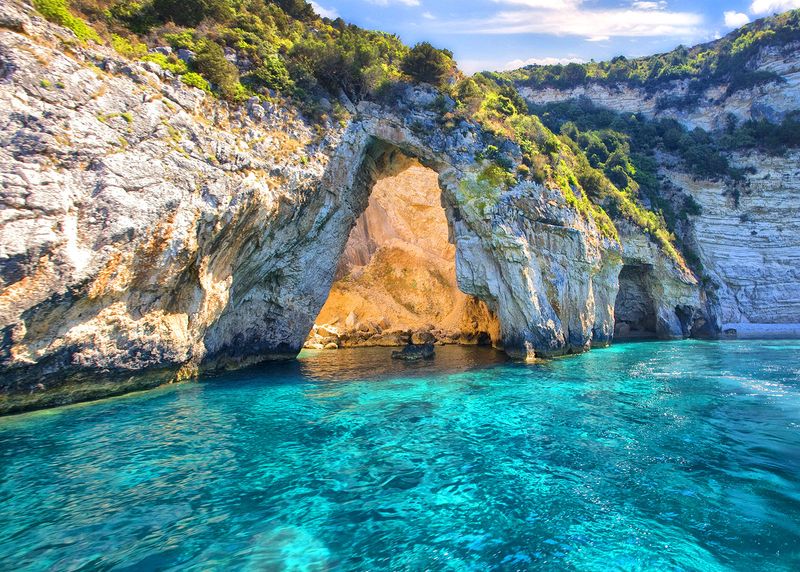
Legend claims Poseidon created Paxos by striking Corfu with his trident to make a peaceful retreat for himself and his wife Amphitrite. The sea god’s supposed hideaway remains blissfully untouched by mass tourism, with no airport and limited ferry connections preserving its tranquility.
Centuries-old olive groves carpet the landscape – some trees dating back to Venetian rule still produce exceptional oil. The eastern coast reveals three postcard-perfect harbors: Gaios, Loggos, and Lakka, where colorful fishing boats bob alongside sophisticated yachts.
A short boat ride to tiny sister island Antipaxos unveils Caribbean-worthy beaches like Voutoumi, where fine white sand meets water in impossible shades of blue. The Blue Caves along Paxos’ west coast create magical light effects as sunbeams penetrate massive limestone arches – best explored by traditional wooden boat with a local captain.
11. Zakynthos: Shipwrecks and Sea Turtles
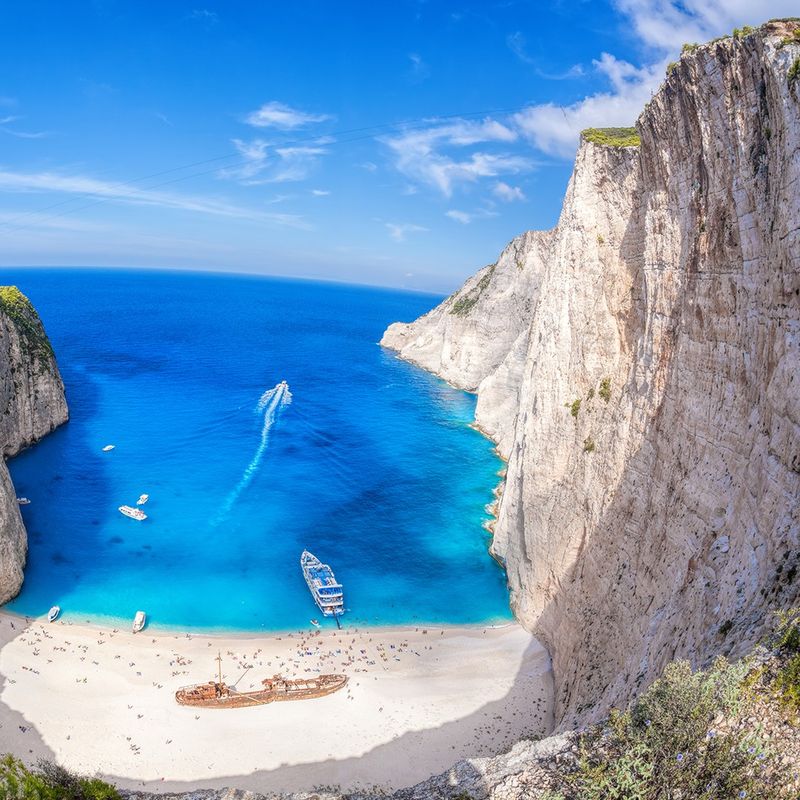
Navagio Beach appears almost unreal – a perfect crescent of white pebbles accessible only by boat, dramatically framed by towering limestone cliffs with a rusting shipwreck at its center. The smuggler’s vessel that ran aground in 1980 while fleeing the Greek navy has transformed into the most photographed spot in Greece.
Below turquoise waters, endangered loggerhead turtles return each summer to lay eggs on protected beaches. Laganas Bay hosts Europe’s largest nesting population, with conservation efforts ensuring these ancient mariners continue their 200-million-year-old ritual.
Island interior surprises with verdant valleys where village life continues unchanged, producing exceptional honey, olive oil, and the currant-filled pastries called mantolato. The Blue Caves near Cape Skinari create mesmerizing light effects as sunbeams reflect off white seabeds, giving swimmers an ethereal blue glow during morning visits.
12. Ios: Hidden Elegance Beyond the Party Reputation
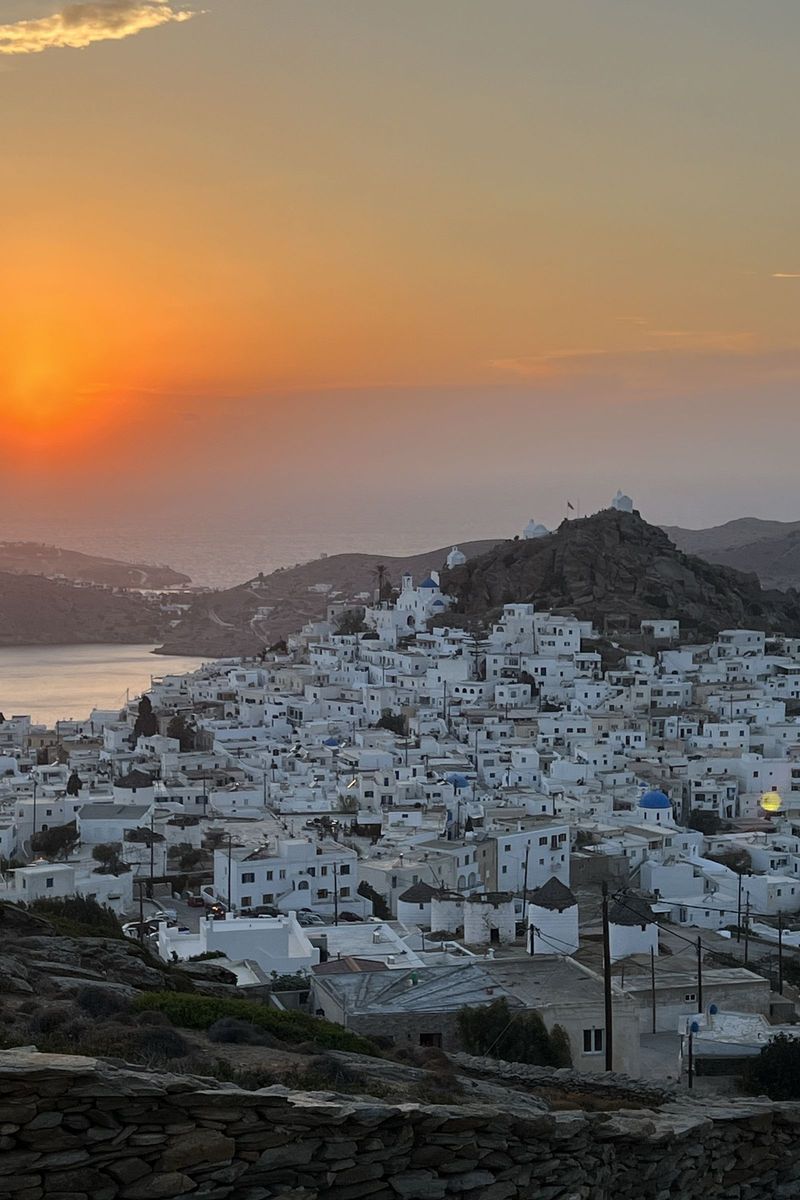
Homer’s final resting place according to local legend, Ios harbors depths beyond its party-island reputation. The poet’s purported grave sits high above Chora, offering spectacular sunset panoramas across the archipelago.
Chora itself surprises with architectural elegance – a cascade of whitewashed buildings climbing from valley to hilltop, crowned by 12 windmills and dozens of blue-domed churches. Morning reveals the town’s true beauty after night revelers retreat, when bakeries fill narrow lanes with aromas of fresh bread and local grandmothers sweep marble doorsteps.
Mylopotas Beach stretches golden for a kilometer, while Manganari offers five consecutive coves of increasing tranquility. The island’s interior reveals unexpected agricultural richness, with ancient terraced fields still producing olives, figs and grapes. Skarkos archaeological site contains remarkably preserved Early Cycladic settlement ruins dating to 2800 BC.
13. Kefalonia: Captain Corelli’s Rugged Paradise
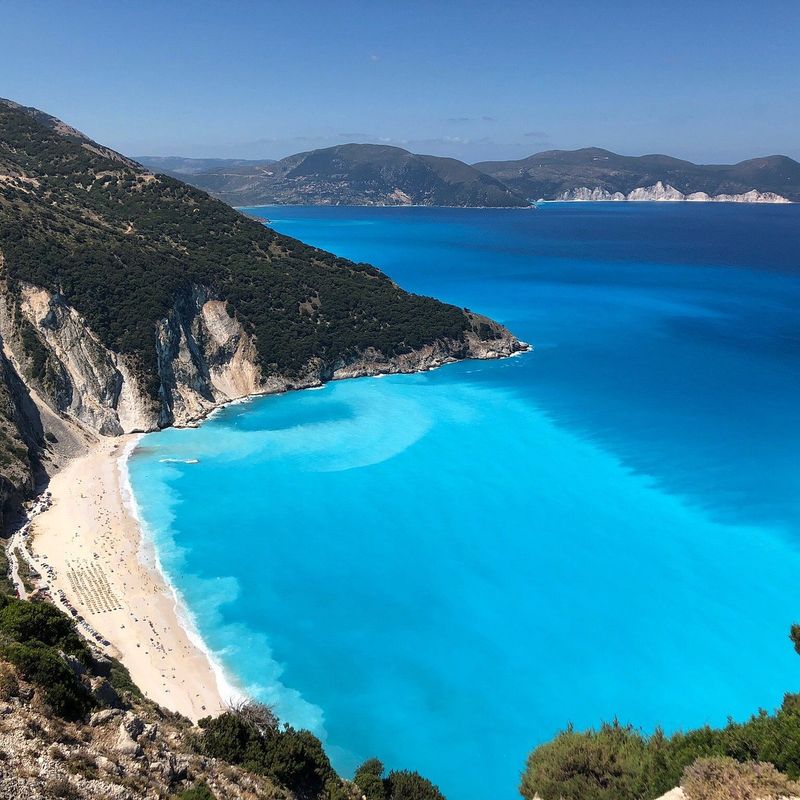
Myrtos Beach defies belief – a perfect crescent of white pebbles between towering limestone cliffs and water in seemingly impossible shades of blue. Made famous as the backdrop for ‘Captain Corelli’s Mandolin,’ Kefalonia’s dramatic beauty survived the devastating 1953 earthquake that leveled most of the island.
Melissani Cave creates natural magic as boats glide through an underground lake where collapsed ceiling allows sunbeams to penetrate, creating an ethereal blue glow. The fishing village of Fiskardo escaped earthquake destruction, preserving Venetian architecture now housing upscale restaurants and boutiques.
Mount Ainos National Park protects ancient Greek fir forests found nowhere else on earth, where wild horses roam freely among trees draped in mist. Local winemakers produce Robola – a distinctive white wine with citrus notes from vineyards grown in limestone-rich soil, perfectly complementing the island’s exceptional seafood.

